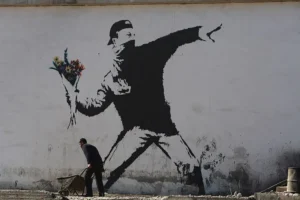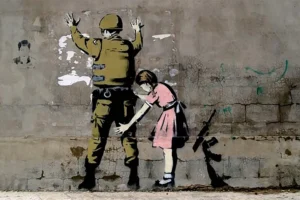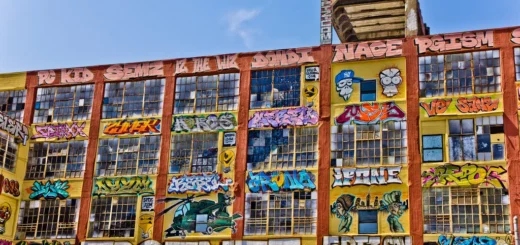What does graffiti is a crime Banksy mean?
Art is a powerful medium that can challenge societal norms and provoke thought. Graffiti, in particular, has gained significant recognition in recent years, with prominent street artists like Banksy captivating audiences worldwide. Banksy, known for his anonymous identity and politically charged artwork, has often made bold statements through his creations. One such statement reads, “Graffiti is a Crime.” In this article, we will explore the meaning behind this powerful message and delve into the broader implications of graffiti as an art form and its legal status.
Who is Banksy, and why is he significant?
Banksy is an anonymous street artist and political activist whose identity remains a mystery. His thought-provoking artworks have garnered immense popularity and attention globally. Banksy’s creations often challenge authority, criticize societal norms, and raise awareness about various socio-political issues. Through his unconventional artistic approach, Banksy has successfully captured the imagination of millions, blending satire, humor, and powerful imagery to convey his messages.

What is the message behind “Graffiti is a Crime”?
Banksy’s statement, “Graffiti is a Crime,” carries a dual meaning. On one hand, it highlights the legal repercussions associated with graffiti as an act of vandalism and trespassing. Graffiti is generally viewed as an unlawful activity, defacing public or private property without permission. By drawing attention to this fact, Banksy encourages viewers to question the societal norms surrounding graffiti and its categorization as a crime.
At the same time, Banksy’s statement can be interpreted as a critique of the criminalization of graffiti art itself. Despite its status as a form of self-expression, graffiti has often been stigmatized and marginalized. The artist challenges this perception by provoking dialogue and urging viewers to reconsider their preconceived notions about graffiti’s artistic value.
Is graffiti art or vandalism?
The question of whether graffiti is art or vandalism has been a subject of ongoing debate. Traditional definitions of art typically emphasize aesthetic qualities and intentionality, whereas vandalism implies destruction and illegality. However, graffiti blurs these lines by encompassing a wide spectrum of styles and motivations.
Some argue that graffiti should be viewed purely as an act of vandalism due to its unauthorized nature and potential property damage. Others believe that graffiti can transcend its illicit origins and be considered a legitimate art form, citing examples of renowned street artists whose works have been exhibited in galleries and museums.
The classification of graffiti often depends on the context, intent, and execution. While some graffiti may indeed be crude or aimless, there are instances where it serves as a powerful means of expression, offering social commentary, cultural representation, and a voice for marginalized communities.
How does Banksy challenge the perception of graffiti?
Banksy’s artistic approach challenges the traditional perception of graffiti by merging it with thought-provoking imagery and messages. His artworks blend elements of street art, stencil techniques, and clever juxtapositions to convey strong socio-political messages. By incorporating these elements, Banksy elevates graffiti to a form of cultural critique, engaging viewers on a deeper level.

Moreover, Banksy’s choice of unconventional locations for his artwork, such as walls, bridges, and public spaces, adds an extra layer of subversion. By displaying his works in unexpected places, Banksy effectively disrupts the established art world hierarchy and reaches a broader audience, bridging the gap between the elitist art scene and the public.
What impact has Banksy’s work had on the perception of graffiti?
Banksy’s work has played a pivotal role in transforming public perception of graffiti. By combining artistic skill with powerful social commentary, he has succeeded in generating widespread interest and appreciation for graffiti as a form of art. His anonymity has added to the mystique and intrigue surrounding his creations, amplifying their impact.
Banksy’s artwork has also sparked conversations about the value of public spaces and the role of art in society. Many cities have embraced street art, creating designated areas or legal graffiti zones to encourage artists to express themselves freely. This shift signifies a growing acceptance of graffiti as a valid form of artistic expression, blurring the boundaries between street art and more traditional art forms.
Conclusion
Banksy’s statement, “Graffiti is a Crime,” serves as a call to reconsider our preconceived notions about graffiti, challenging both its legal categorization as vandalism and its artistic value. By merging thought-provoking imagery with unconventional locations, Banksy has successfully blurred the lines between graffiti and traditional art forms, encouraging dialogue and shifting public perception. As we continue to engage with graffiti and its evolving role in society, it is essential to recognize the power of art in provoking conversations, challenging norms, and shaping our collective understanding of culture and expression.



